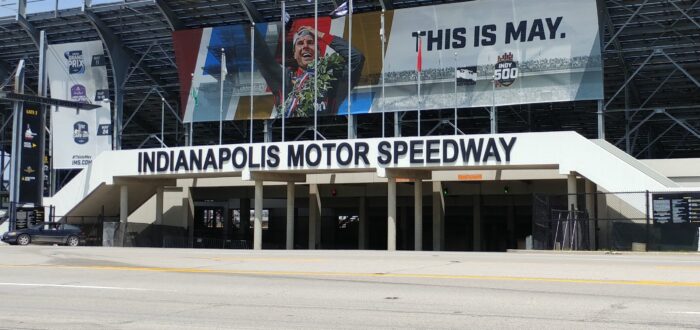I am not a huge race fan, but this time of year it would be insane to claim to be hyping Indy, and not promptly discuss IMS. May is a magical time on the west side of Indianapolis and in the town of Speedway. I won’t bore you with the long list of firsts I experienced during the gritty snake pit years during the 1980’s when I was a teen, but even since (and maybe because) they cleaned it up and made it more family friendly…going to the track and exploring the history, the sights, and the sounds is a right of passage for every citizen of this city…and for every Hoosier…or race fan.
Here are some historical notes about the Indianapolis Motor Speedway.
Early Years (1909-1910):
- The idea for the Indianapolis Motor Speedway was conceived by Carl G. Fisher, a businessman, and entrepreneur, along with his partners James A. Allison, Arthur C. Newby, and Frank H. Wheeler.
- Construction of the speedway began in 1909 on 328 acres of farmland on the outskirts of Indianapolis, Indiana.
- The track was originally surfaced with crushed stone and tar, which led to a disastrous opening day on August 19, 1909, causing several accidents and fatalities.
- Following renovations and improvements, including the addition of a brick surface, the speedway reopened in 1910.
The Brickyard Era (1911-1960s):
- The inaugural Indianapolis 500-mile race, commonly known as the Indy 500, took place on May 30, 1911, attracting a crowd of over 80,000 spectators.
- The race quickly became one of the premier events in motorsports, drawing top drivers and teams from around the world.
- In 1911, the entire track surface was covered with 3.2 million paving bricks, giving rise to the nickname “The Brickyard.”
- The Speedway continued to host the Indy 500 annually, with only a few exceptions during World Wars I and II.
- Throughout the early to mid-20th century, the Indianapolis Motor Speedway became synonymous with speed and innovation, witnessing numerous records broken and technological advancements in racing.
- Notable drivers such as Ray Harroun, Wilbur Shaw, and A.J. Foyt achieved legendary status with their victories at the Speedway during this era.
Modern Era (1970s-Present):
- In the 1970s, the Speedway underwent significant renovations and modernizations, including the addition of safer barriers, improved grandstands, and upgraded facilities.
- The 1980s and 1990s saw the emergence of new stars like Rick Mears, Al Unser Jr., and Emerson Fittipaldi, who continued to uphold the Speedway’s legacy of thrilling competition.
- In 1996, the Indianapolis Motor Speedway was purchased by Tony George, grandson of Tony Hulman, who had owned the Speedway since 1945.
- The Speedway continued to evolve, with the construction of the Pagoda Tower in 2000, and the addition of the road course configuration in 2000, which hosts the IndyCar Grand Prix.
- In 2016, the Speedway celebrated its 100th running of the Indianapolis 500, marking a historic milestone in the event’s history.
- Today, the Indianapolis Motor Speedway remains one of the most iconic venues in motorsports, hosting not only the Indy 500 but also a variety of other racing events, concerts, and cultural festivals throughout the year.
The Indianapolis Motor Speedway’s rich history and enduring legacy have cemented its status as a symbol of American motorsport excellence, attracting fans and participants from around the globe.


